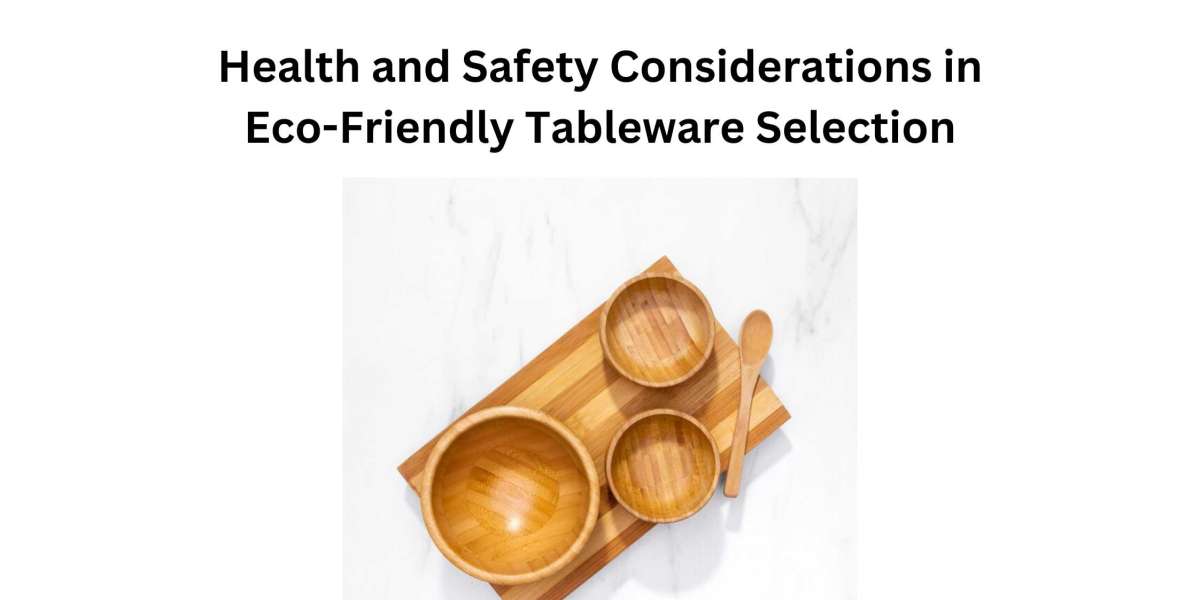In recent years, there has been a notable shift towards eco-friendly tableware as consumers become increasingly mindful of their environmental footprint. While the focus on sustainability is commendable, it’s essential not to overlook crucial health and safety considerations when selecting eco-friendly tableware. In this blog, we’ll explore the importance of prioritizing health and safety in eco-friendly tableware selection and provide valuable insights to help you make informed choices for yourself and your loved ones.
The Rise of Eco-Friendly Tableware
With growing concerns about plastic pollution and environmental degradation, eco-friendly tableware has gained significant traction in the market. Made from renewable and biodegradable materials such as bamboo, sugarcane bagasse, and cornstarch, these alternatives offer a sustainable option to traditional plastic and Styrofoam tableware. However, while the environmental benefits are evident, it’s crucial to ensure that these products meet stringent health and safety standards.
Material Matters: Understanding Eco-Friendly Options
When it comes to eco-friendly tableware, the choice of material plays a pivotal role in determining its safety and suitability for use. Here are some common eco-friendly materials used in tableware and their associated health considerations:
Bamboo: Bamboo is a popular choice for eco-friendly tableware due to its natural abundance and rapid regrowth. However, it’s essential to ensure that bamboo tableware is free from harmful chemicals and adhesives often used in the manufacturing process. Look for products labeled as “food-safe” and free from BPA, phthalates, and other toxins.
Sugarcane Bagasse: Tableware made from sugarcane bagasse, the fibrous residue left after extracting juice from sugarcane, is biodegradable and compostable. However, ensure that the biodegradable products are certified as food-grade and free from bleach or other harmful chemicals used during processing.
Cornstarch: Tableware made from cornstarch is compostable and often touted as a renewable alternative to plastic. However, be cautious of potential allergens, as corn-based products may trigger reactions in individuals with corn allergies. Additionally, verify that the tableware is free from genetically modified organisms (GMOs) and chemical additives.
Certifications and Standards: Ensuring Safety and Quality
When selecting eco-friendly tableware, look for certifications and standards that attest to the product’s safety and quality. Common certifications to watch out for include:
- FDA Approval: Tableware labeled as “FDA-approved” has undergone testing to ensure that it meets the safety standards set by the U.S. Food and Drug Administration.
- EU Food Contact Compliance: For consumers in the European Union, look for tableware that complies with EU regulations on food contact materials, such as Regulation (EC) No 1935/2004.
- Compostability Certification: Tableware certified as compostable by organizations like the Biodegradable Products Institute (BPI) or the European Bioplastics (EN 13432) meets specific criteria for biodegradation and compostability.
Safe Handling and Usage Practices
In addition to selecting safe and certified eco-friendly tableware, it’s essential to practice safe handling and usage to mitigate potential health risks. Here are some tips to ensure safe usage:
- Avoid High Temperatures: Eco-friendly tableware may not withstand high temperatures, so avoid using them for hot foods or liquids that could cause warping or deformation.
- Hand Wash Only: While some eco-friendly tableware may be dishwasher-safe, hand washing is generally recommended to prolong their lifespan and prevent potential leaching of chemicals from detergents.
- Avoid Microwaving: Unless specifically labeled as microwave-safe, refrain from microwaving food or beverages in eco-friendly tableware to prevent melting or release of harmful substances.
Conclusion: Balancing Sustainability with Safety
In conclusion, while the shift towards eco-friendly tableware is a positive step towards reducing environmental impact, it’s crucial to prioritize health and safety considerations in the selection process. By understanding the materials used, seeking certifications, and practicing safe handling and usage, you can enjoy the benefits of eco-friendly tableware without compromising on safety. Together, let’s strive to make sustainable choices that promote both a healthier planet and healthier lives.
#ecolates #ecolatespvtltd #ecofriendlytableware #ecofriendlyfoodpackaging #sustainabletableware #sugarcanebagasseproducts #biodegradableproducts







